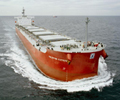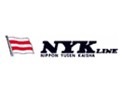MABUX: Bunker market this morning, May 25

MABUX World Bunker Index (consists of a range of prices for 380 HSFO, VLSFO and MGO (Gasoil) in the main world hubs) declined slightly on May 22:
380 HSFO – USD/MT – 254.50 (-1.70)
VLSFO – USD/MT – 295.00 (-6.00)
MGO – USD/MT – 362.90 (-6.35)
Meantime, world oil indexes fell on May 22 as tensions rose between the United States and China, and doubts grew about the pace of demand recovery from the coronavirus crisis.
Brent for July settlement decreased by $0.93 to $35.13 a barrel on the London-based ICE Futures Europe exchange. West Texas Intermediate for July delivery fell by $0.67 to $33.25 a barrel on the New York Mercantile Exchange. The Brent benchmark traded at the premium of $1.88 to WTI. Gasoil for June delivery lost $8.75.
Today morning global oil indexes have turned into slight upward evolution.
China said that it plans to impose a new national security law for Hong Kong, which drew a reaction from U.S. President Donald Trump. President Trump said on May 21 that if China were to impose a new security law in the former British colony, the United States would address that issue very strongly.
China also said it has not set a specific target for economic growth this year because country will face some factors that are difficult to predict in its development due to the great uncertainty regarding the COVID-19 pandemic and the world economic and trade environment. Although the government failed to set the 2020 target, it pledged to issue CNY 1 trillion ($140.67 billion) of special treasury bonds to support regions hard hit by the virus. China’s abandonment of the growth target could be interpreted as putting less focus on infrastructure investment and could be viewed as negative for global fuel market.
In response to the industry downturn, national oil companies (NOCs) are set to slash their exploration budgets by 26 percent on average this year. Besides, although NOCs are axing exploration budgets in the near term, the measure is likely to be just a short-term move because exploration is an important part of NOCs business for the longer term, much more so than exploration is for the supermajors. NOCs invested on average 17 percent of their upstream budgets in exploration between 2015 and 2019, while the international oil majors spent an average 8 percent of upstream budgets on exploration in that period.
At total of 318 US oil and natural gas drilling rigs were in operation on 22 May – the lowest level in the rig count data series that began back in 1987. The number of oil rigs decreased for the week by 21 rigs, bringing the total to 237—a 560-rig loss year over year. The US Energy Information Administration said that since 17 March, 71% (308 rigs) of the rigs taken out of service were in the top three US crude-producing regions: the Permian region in southeastern New Mexico and western Texas, the Eagle Ford region in southern Texas, and the Bakken region in Montana and North Dakota. The EIA noted that the current drop in rig count followed the recent decrease in the oil price much more rapidly than in the past. As per EIA, the quick reduction in active rigs reflects the sudden loss of petroleum demand related to coronavirus-related mitigation efforts that also resulted in recent increases in the amount of crude oil placed in storage.
The Argentine government fixed domestic oil prices at $45 per barrel in an attempt to prevent a collapse of its oil industry. The price would be voided if Brent moves above $45 for 10 days. The policy will last until the end of 2020, but there are questions about its efficiency.
The forces of the Government of National Accord (GNA) have overrun an air base near Tripoli, beating back the Libyan National Army. The move is a setback to the warlord Khalifa Haftar, and it could theoretically lead to the restart of some shuttered oil fields. However, the LNA still controls the main ports of the country. Libya is only exporting 90,000 bpd, down from 1.2 million bpd last year.
Venezuela’s military will escort Iranian tankers bringing fuel to the gasoline-starved country as soon as they enter its exclusive economic zone. Comments came after Venezuelan opposition leader Juan Guaido said the shipment should “alarm” Latin America. Both OPEC members are U.S. adversaries whose oil industries are under U.S. sanctions. Trump administration officials say Washington is considering a response to the shipment. Five tankers are carrying around 1.5 million barrels of fuel, and passed the Suez Canal in the first two weeks of May. They are expected to arrive in Venezuela between late May and early June.
We expect global bunker prices may slightly decline today in a range of minus 2-8 USD.
Source: MABUX

 Hellenic Shipping News Worldwide Hellenic Shipping News Worldwide, Online Daily Newspaper on Hellenic and International Shipping
Hellenic Shipping News Worldwide Hellenic Shipping News Worldwide, Online Daily Newspaper on Hellenic and International Shipping






















 PG-Software
PG-Software